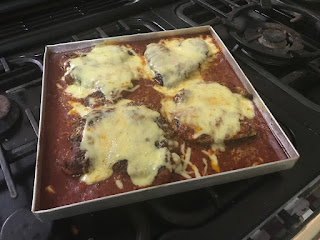Thai Curry
A little bit of an update before we get into the actual cooking. We’re going to be moving this blog! I (along with a few friends) recently purchased a domain for an unrelated project and I realised that it gave me an opportunity to move off blogger, something I’ve wanted to do for quite some time. I’ve got a friend who’s helping me figure out the logistics behind the move. It’s on the roadmap and we’ll get there.
Speaking of roadmaps, this post is actually something I hadn’t intended on publishing until mid January (gasp, has he actually planned ahead for once?) for a few different reasons (one of them being I haven’t made this in a while and I don’t have many pictures of the process) but a few people requested something simple so here we are. I last made this in a makeshift kettle a few years ago, which should tell you how simple it is. With that being said, onto the actual blog post :
As much as I love pasta, I do like to branch out and keep myself on my toes. This is something on the opposite end of the spectrum. This is a creamy Thai curry that you can make either with meat or just with vegetables.
It’s entirely up to you! If you are using meat, I highly recommend pork but chicken will do as well. You’re going to need the following
Thai curry paste - 1 tablespoon (this works with red, green and yellow curry paste so you can use any of them)
Coconut milk - 1-2 small cartons, this depends on you
Pork/Chicken - thinly sliced, about 100-200g (optional)
Carrots 1-2
Beans 1 bunch/handful
Broccoli -1 large (optional but I quite like adding broccoli to this)
Bell peppers - 1-2
Zuchini 1
Now, the vegetables are entirely up to you but I’d recommend avoiding stuff like tomato or corn. Now that that’s out of the way, if you’re using meat, start by browning your meat with a tiny bit of oil. Once you’ve got some colour on it, take it out of the pan and set it aside. It doesn’t matter if it’s not fully cooked, we’re going to be cooking it in the curry again later anyway. We’re looking to get some fond on the bottom of the pan to add flavour to the curry. If you’re not using meat, you can ignore the meat and oil and go directly to the next step which is heating about a tablespoon of curry paste in the pan. If you’re using meat, scrape up the fond before it burns to mix it with the curry paste.
Once that’s nice and fragrant, add your coconut milk and lower the heat a little. We want this to simmer. Mix it thoroughly so the mixture is uniform. Cook that for a minute or two and give it a taste. Is it too mellow? Add a bit more curry paste if you want more intensity. There’s no hard and fast rule that you can only use X amount of curry paste. While that’s simmering, start prepping your vegetables. You can dice your carrots and bell peppers but I like to snap the beans in half and add them to the pan. Add your vegetables and meat to the pot and let the entire thing simmer for a good 10-15 minutes. We want to cook this down a little to thicken the gravy but we don’t want to turn our vegetables into mush. Once you’ve got the thickness you want and your meat is cooked, take the pan off the heat and let it cool a little bit.
I’ve found that different people like different intensities for the curry so you can add extra curry paste in the beginning or use less depending on how you like it. I like to serve this with plain rice but you can serve it with noodles as well.
 |
| In hindsight, I'd have thickened the curry up more. Learn from my mistakes. |








